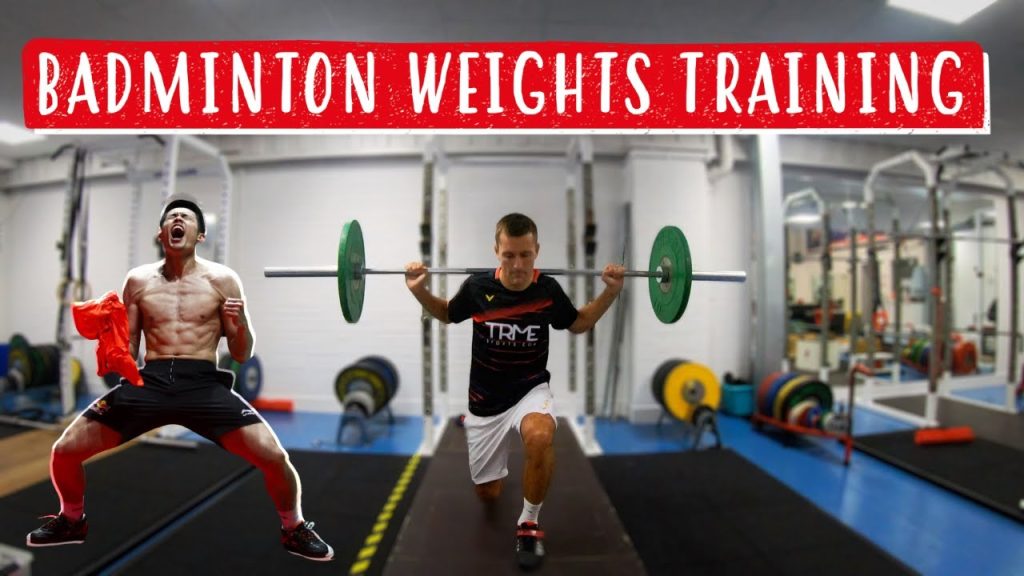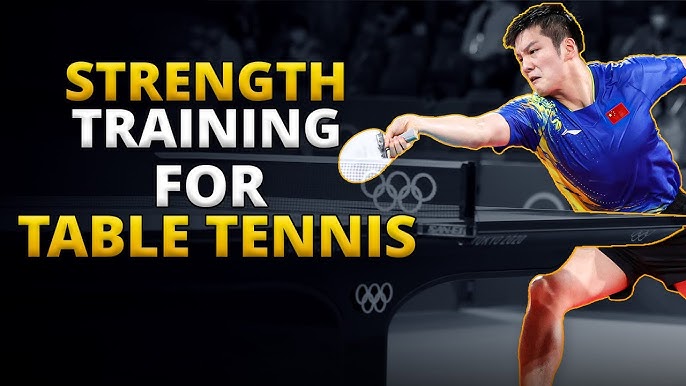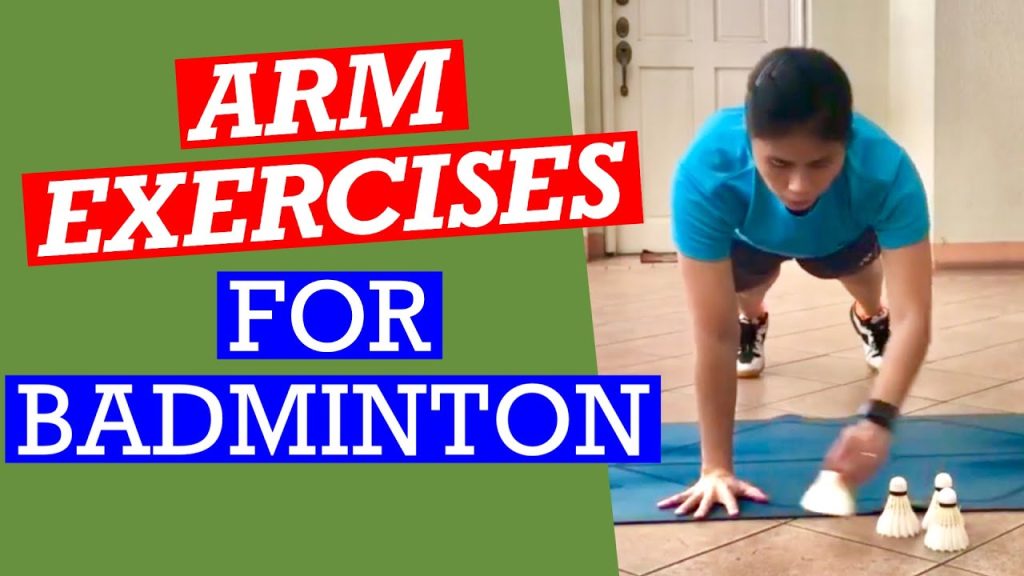Badminton strength training is crucial for players. It boosts performance and reduces injury risk.
Strength training helps badminton players improve their speed, agility, and power. These elements are vital for quick movements on the court. By focusing on specific exercises, players can enhance their endurance and stamina. This leads to better performance during matches.
Stronger muscles also help in preventing injuries, ensuring players stay fit and healthy. Additionally, strength training supports better balance and coordination. This is essential for executing precise shots and swift movements. In this blog, we will explore the importance of strength training in badminton. We will discuss various exercises that target key muscle groups. So, whether you’re a beginner or a pro, incorporating strength training into your routine can elevate your game.
Importance Of Strength Training In Badminton
Strength training is essential in badminton. It improves your performance and prevents injuries. This type of training targets key muscle groups. It boosts power, speed, and agility on the court.
Enhancing Performance
Strength training enhances your game performance. Stronger muscles give you more power for smashes and clears. Improved endurance helps you last longer during matches. Quick movements become easier with stronger legs and core. You can change direction faster and react swiftly to your opponent’s shots.
Preventing Injuries
Strength training also helps in preventing injuries. Strong muscles support your joints and reduce strain. This lowers the risk of sprains, strains, and other injuries. A stronger core helps maintain better posture. Good posture reduces the likelihood of back and shoulder issues.

Credit: www.youtube.com
Key Muscle Groups To Target
Badminton strength training is essential for improving performance and reducing injuries. Focusing on key muscle groups can make a big difference. Strengthening specific areas helps enhance power, agility, and endurance. Let’s explore the main muscle groups you should target for better badminton performance.
Upper Body
The upper body plays a vital role in badminton. It provides the power for smashing and serving. Strengthen your shoulders, arms, and chest. Focus on exercises like push-ups, pull-ups, and shoulder presses. These will improve your shot power and control. Strong upper body muscles also help prevent injuries.
Lower Body
Your legs are crucial for quick movements and stability. Strengthening the lower body enhances agility and speed on the court. Focus on squats, lunges, and calf raises. These exercises build strength in your thighs, glutes, and calves. Strong legs help you react faster and maintain balance during play.
Core
A strong core is key for overall stability and control. It connects the upper and lower body, providing a solid foundation. Work on planks, Russian twists, and leg raises. These exercises target your abs, obliques, and lower back. A strong core improves your posture, balance, and shot accuracy.
Warm-up Exercises
Warm-up exercises are crucial in badminton strength training. They prepare your muscles, reduce injury risk, and enhance performance. A good warm-up should include dynamic stretches and light cardio. These exercises help to increase blood flow and flexibility.
Dynamic Stretches
Dynamic stretches involve moving parts of your body and gradually increasing reach, speed, or both. They are essential for preparing your muscles for a workout. Here are some effective dynamic stretches:
- Arm Circles: Stand with feet shoulder-width apart. Extend your arms out to your sides. Make small circles with your arms, gradually making them larger. Repeat for 30 seconds.
- Leg Swings: Stand on one leg and swing the other leg forward and backward. Keep your movements controlled. Repeat 10 times on each leg.
- Lunges with a Twist: Step forward into a lunge. Twist your torso towards the forward leg. Return to the starting position and switch legs. Repeat 10 times.
Light Cardio
Light cardio helps to increase your heart rate and body temperature. It prepares your cardiovascular system for more intense activities. Here are some light cardio exercises:
- Jogging: Jog in place or around the court for 2-3 minutes. Keep a steady pace.
- Jumping Jacks: Start with your feet together and arms at your sides. Jump while spreading your legs and raising your arms above your head. Return to the starting position. Repeat for 1 minute.
- Skipping: Use a jump rope and skip for 1-2 minutes. Maintain a light and steady rhythm.
Incorporating these warm-up exercises into your badminton strength training routine will ensure you are ready for a productive session. Remember to focus on form and control during each exercise.
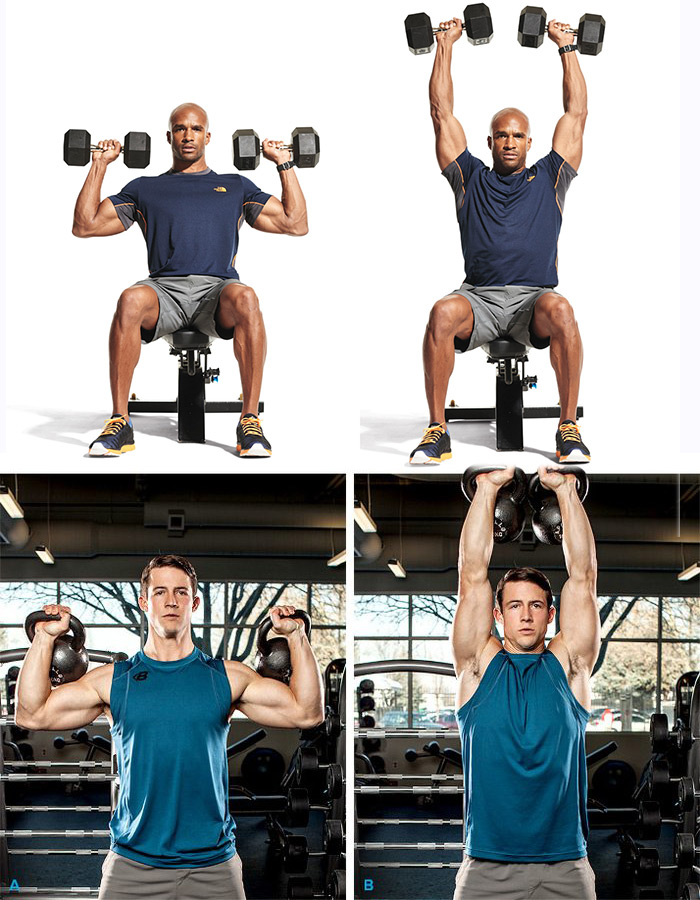
Credit: www.sportsuncle.com
Upper Body Strength Exercises
Building upper body strength is essential for badminton players. It helps improve your game by enhancing your ability to hit powerful shots and maintain control during long rallies. Here are some effective upper body strength exercises that you can add to your training routine.
Push-ups
Push-ups are a great exercise to build upper body strength. They work on your chest, shoulders, and triceps. Push-ups also engage your core muscles.
- Start in a plank position with your hands shoulder-width apart.
- Lower your body until your chest is just above the floor.
- Push back up to the starting position.
- Repeat for 10-15 reps.
For beginners, you can start with knee push-ups. This will make the exercise easier.
Advanced athletes can try variations such as diamond push-ups or decline push-ups.
Dumbbell Shoulder Press
The dumbbell shoulder press is another effective exercise. It targets your shoulders, triceps, and upper chest.
- Sit on a bench with your back straight.
- Hold a dumbbell in each hand at shoulder height.
- Press the weights upward until your arms are fully extended.
- Slowly lower the weights back to shoulder height.
- Repeat for 10-12 reps.
Using dumbbells allows for a greater range of motion. This helps in enhancing shoulder mobility and strength.
Always start with a weight you can manage comfortably. Increase the weight gradually as you gain strength.
Lower Body Strength Exercises
Badminton demands quick footwork and explosive movements. Strengthening the lower body is crucial. Strong legs enhance agility, speed, and power on the court. Here are some effective lower body exercises to boost your performance.
Squats
Squats are fundamental. They target the quads, hamstrings, and glutes. Stand with feet shoulder-width apart. Lower your body as if sitting in a chair. Keep your back straight and knees behind your toes. Rise back up to the starting position. Repeat for several reps. This exercise builds strength and stability.
Lunges
Lunges work on balance and coordination. Step forward with one leg, lowering your hips until both knees are bent at a 90-degree angle. Ensure the front knee is directly above the ankle. Push back to the starting position. Alternate legs and repeat. Lunges strengthen the thighs, glutes, and calves. They also improve your range of motion.
Core Strength Exercises
Core strength is vital for badminton players. Strong core muscles improve balance and stability. This helps in powerful smashes and swift movements. Below are some effective core exercises.
Planks
Planks are excellent for building core strength. They target the abs, back, and shoulders. Here’s how to do a basic plank:
- Start in a push-up position.
- Bend your elbows and rest your weight on your forearms.
- Your body should form a straight line from head to heels.
- Hold this position for as long as you can.
Remember to keep your core tight and don’t let your hips sag. Aim for at least 30 seconds to start. Gradually increase your time as you get stronger.
Russian Twists
Russian twists are great for working the obliques. They also help in improving rotational power. This is how you perform Russian twists:
- Sit on the floor with your knees bent.
- Lean back slightly to engage your core.
- Hold a weight or a ball with both hands.
- Twist your torso to the right, then to the left.
- Repeat for a set number of reps or a specific time.
Keep your movements controlled and your core engaged. Start with a light weight and increase as you get stronger.
Plyometric Drills
Plyometric drills boost your explosive power. This is crucial for badminton. These exercises help you move quickly and jump higher. They also improve your balance and coordination. Let’s explore two effective plyometric drills: Box Jumps and Lateral Bounds.
Box Jumps
Box Jumps are great for building leg strength. They also improve your vertical jump.
- Stand in front of a sturdy box or platform.
- Bend your knees slightly.
- Jump onto the box with both feet.
- Land softly on the balls of your feet.
- Step down and repeat.
Start with a lower height. Gradually increase as you get stronger. Aim for 3 sets of 10 jumps each.
Lateral Bounds
Lateral Bounds enhance side-to-side movement. This is vital for quick direction changes in badminton.
- Stand with feet shoulder-width apart.
- Bend your knees and lower your body slightly.
- Push off your left foot and jump to your right.
- Land softly on your right foot.
- Pause briefly, then jump back to the left.
Keep your core engaged throughout. Perform 3 sets of 15 bounds each side.
Both drills improve your agility and explosiveness. Include them in your training routine for better performance on the court.
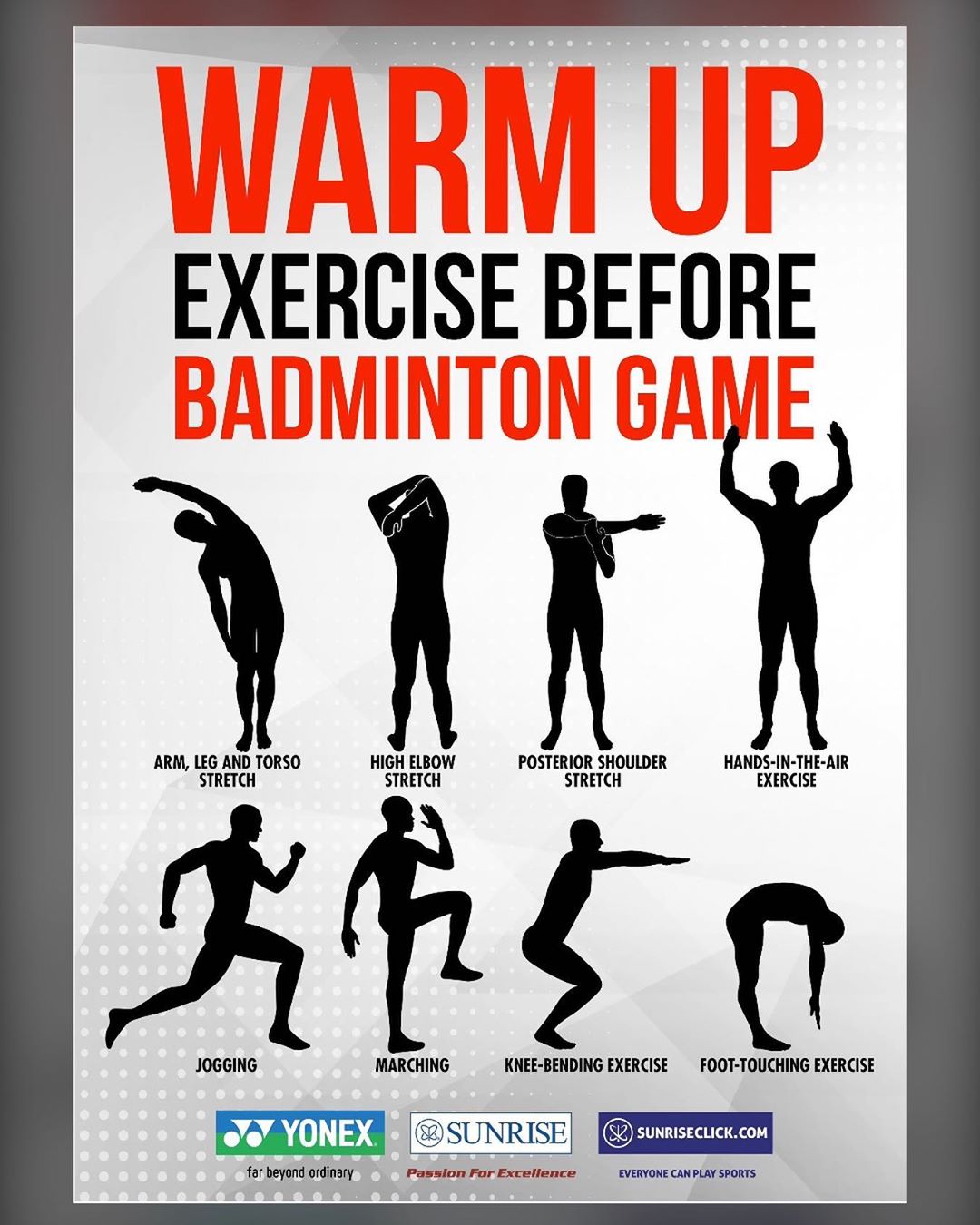
Credit: www.sportsuncle.com
Cool-down And Recovery
After a rigorous badminton strength training session, it’s vital to focus on cool-down and recovery. This phase helps your muscles relax and reduces the risk of injury. Proper recovery can improve your performance and ensure you are ready for the next session. Let’s explore effective cool-down and recovery techniques.
Static Stretches
Static stretches are essential after an intense workout. They help to lengthen and relax the muscles. Hold each stretch for at least 20-30 seconds.
- Quadriceps Stretch: Stand on one leg and pull your other foot towards your glutes.
- Hamstring Stretch: Sit on the floor with one leg extended and reach towards your toes.
- Calf Stretch: Place your hands against a wall and push your heel towards the ground.
- Shoulder Stretch: Pull one arm across your chest and hold it with your other arm.
- Back Stretch: Sit on the floor with your legs crossed and twist your torso gently.
Ensure you breathe deeply during each stretch. This helps to relax your body and mind.
Foam Rolling
Foam rolling is a great way to release muscle tension and improve blood circulation. It can aid in faster recovery.
| Muscle Group | Foam Rolling Technique |
|---|---|
| Quadriceps | Roll from your hip to your knee, applying gentle pressure. |
| Hamstrings | Place the roller under your thigh and roll from your knee to your glutes. |
| Calves | Position the roller under your calf and roll from your ankle to your knee. |
| Upper Back | Lie on the roller and move it along your upper back. |
| IT Band | Lay on your side with the roller under your hip and roll down to your knee. |
Spend about 1-2 minutes on each muscle group. Adjust the pressure as needed to avoid pain.
Frequently Asked Questions
What Are Key Exercises For Badminton Strength?
Key exercises for badminton strength include squats, lunges, deadlifts, and shoulder presses. These exercises build leg, core, and upper body strength. Consistent practice enhances agility, power, and endurance on the court.
How Often Should I Do Strength Training?
Strength training should be done 2-3 times per week. This frequency allows muscles to recover while building strength. Consistency is key for optimal results and performance improvement.
Can Strength Training Improve Badminton Performance?
Yes, strength training enhances badminton performance. It increases muscle power, agility, and endurance. Stronger muscles improve shot accuracy and movement efficiency on the court.
Is Weightlifting Beneficial For Badminton Players?
Weightlifting is beneficial for badminton players. It builds muscle strength and power. Focus on compound movements like squats, deadlifts, and presses to improve overall performance.
Conclusion
Strength training boosts badminton performance. It builds power, speed, and endurance. Regular practice enhances muscle strength. This helps in quick movements on the court. Consistent training reduces injury risks. It also improves overall game efficiency. Start incorporating these exercises today.
See the difference in your play. Stay focused. Keep training. Your badminton skills will surely improve.

